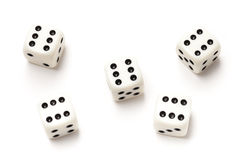
“On cloud none” means “a feeling of well being or elation.” It derives from the nine classes of angles in Christian cosmology. The ninth and highest class – the seraphim – are, according to one source, “one cloud nine” by virtue of their close proximity to God.
Another possible explanation connects cloud nine with Dante’s Divine Comedy. Dante’s “Paradiso” depicts a series of heavens, the highest being the ninth. The souls in the ninth heaven are in the greatest state of bliss because they are close to God.
Meteorologists classified clouds in the late 19th Century and this was officially accepted by the scientific world. Ninth in the classification is the big, puffy cumulonimbus cloud.
The expression nine days’ wonder is based on the proverbial belief that something novel retains attention for just nine days. A “nine-day wonder” is something that creates a short-lived sensation.
The expression “the whole nine yards” is used to include all of a related set of circumstances, conditions or details. Example: “A huge Thanksgiving dinner was served: turkey, mashed potatoes, green bean casserole, cranberry sauce, rolls and pie – the whole nine yards.”
Why nine yards, not eight, seven or ten? A yard is a unit of measurement and the whole nine yards could be any of these: The nine cubic yard capacity of either a cement mixer or the scoop on a front-end loader, the nine yards of cloth required to make a formal dress (a full gown or a saree); the configuration of old square-rigged ships having three masts, each of which could have three yards (long spars tapered toward the ends that supported and spread the head of the square sails) – “the whole nine yards” in total.
Picture Credit : Google







